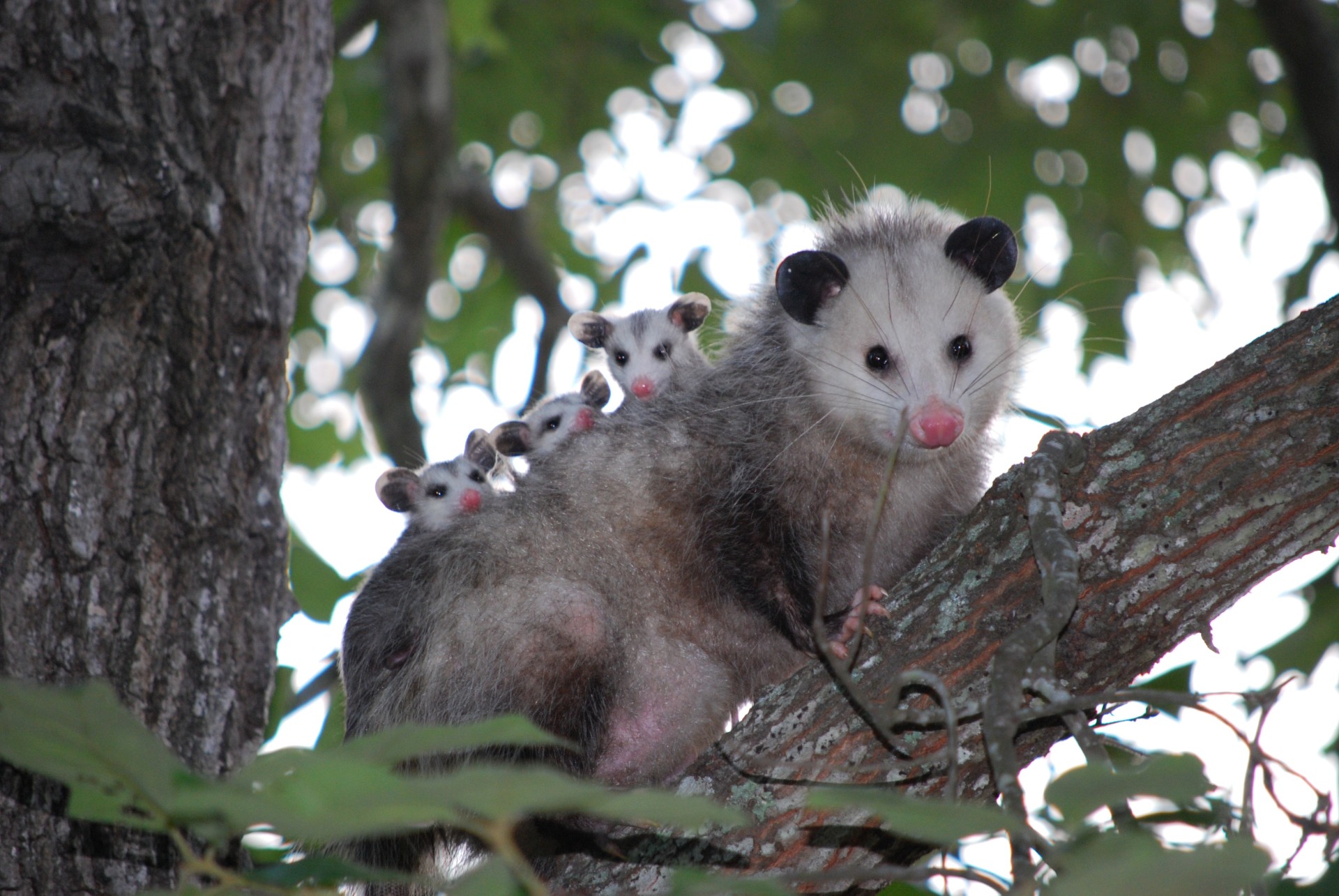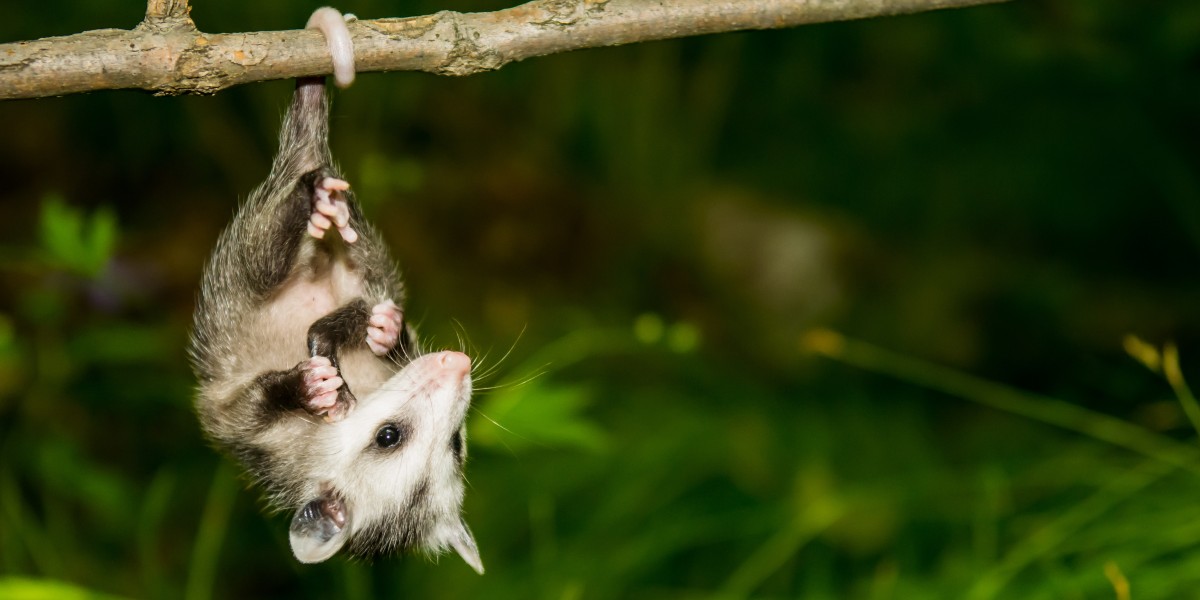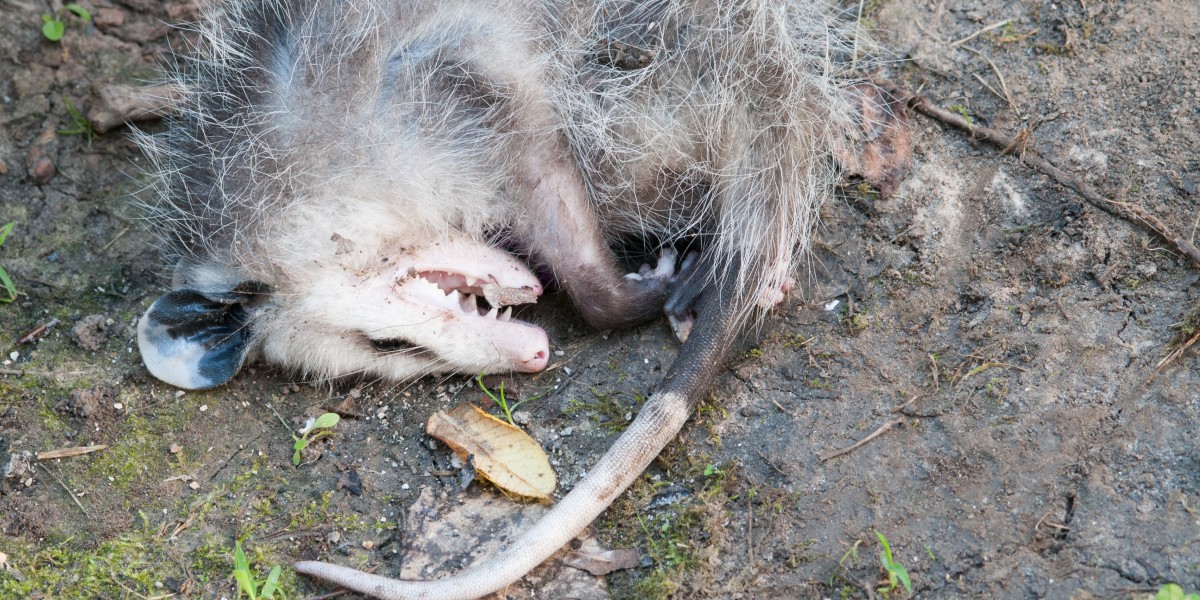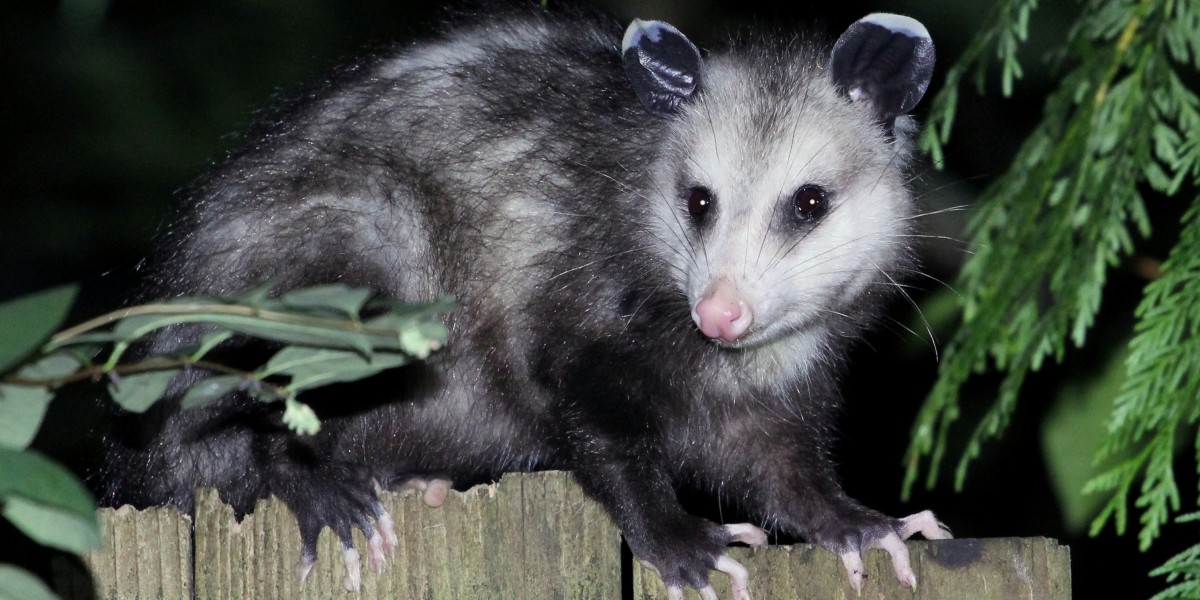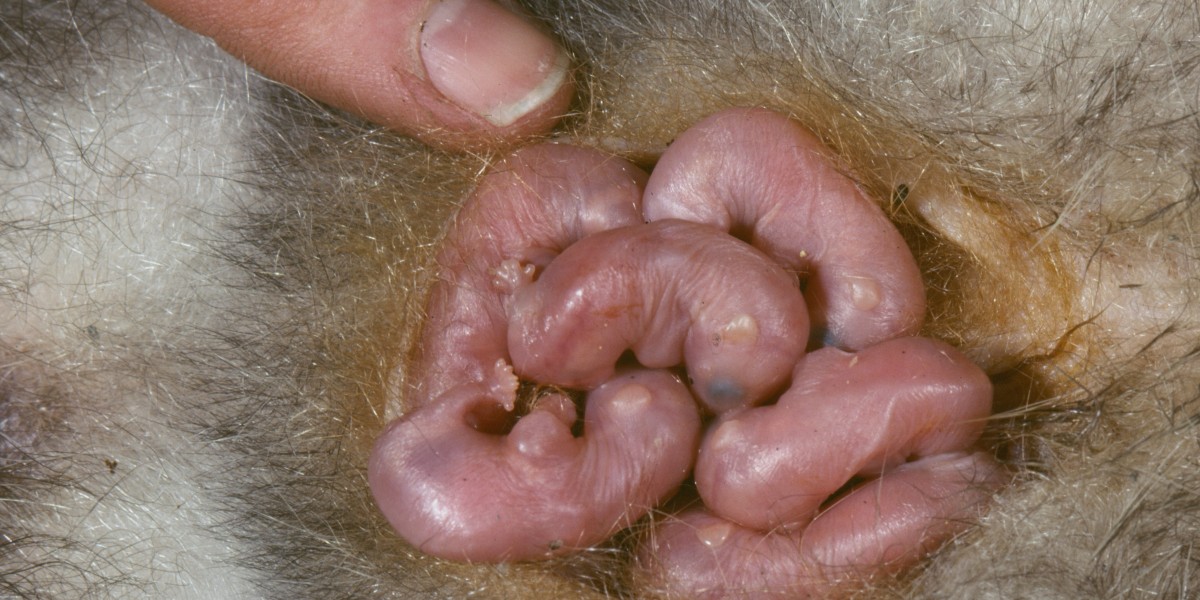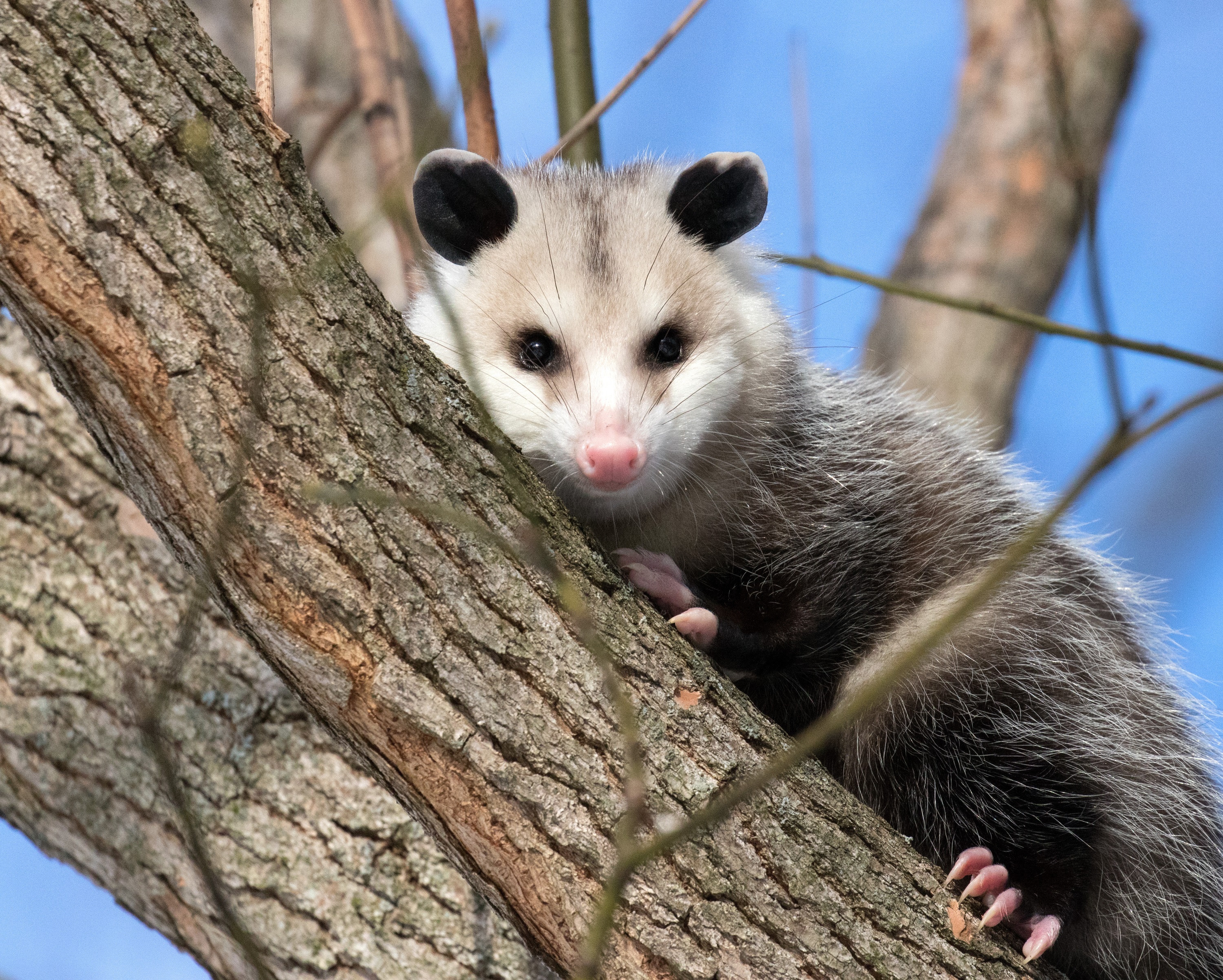The Virginia opossum, or North American opossum (Didelphis virginiana) is the only marsupial species in North America – that’s right, like the kangaroo or koala bears of Australia, opossums raise bumblebee sized babies in a pouch for months before they emerge as young animals! They are often thought of as a nuisance animal – a garbage eating pest that people are unhappy to find in their backyard. What they don’t know about this beneficial, nocturnal nomad would probably surprise them and could change their mind!
Early descriptions of the opossum from Capt. John Smith (1608) refer to it as such; "An Opassom hath an head like a Swine, and a taile like a Rat, and is of the bignes of a Cat. Under her belly she hath a bagge, wherein she lodgeth, carrieth, and sucketh her young"[Wikipedia]. Alright, pretty darn accurate! Considered a game animal, Virginia opossums have slowly made their way up from the southeast and established populations across the northeast, proving their adaptability to colder climates.
Opossums have excellent memories, recalling past food sources and have shown problem solving abilities in scientific studies, out mazing other species easily! It's no wonder they've proven capable of surviving in a colder environment as well as thriving in urban settings. Generally, they have a lifespan of 2-3 years in the wild and females have 1-3 litters each season!
Can't get enough fabulous facts about the opossum?
Opossums are very clean, despite their often-raggedy appearance and stinky smell, which is a predator repellant secretion; they groom themselves regularly, bordering on obsessively – like as much as a house cat!
mammal-3197427.jpg
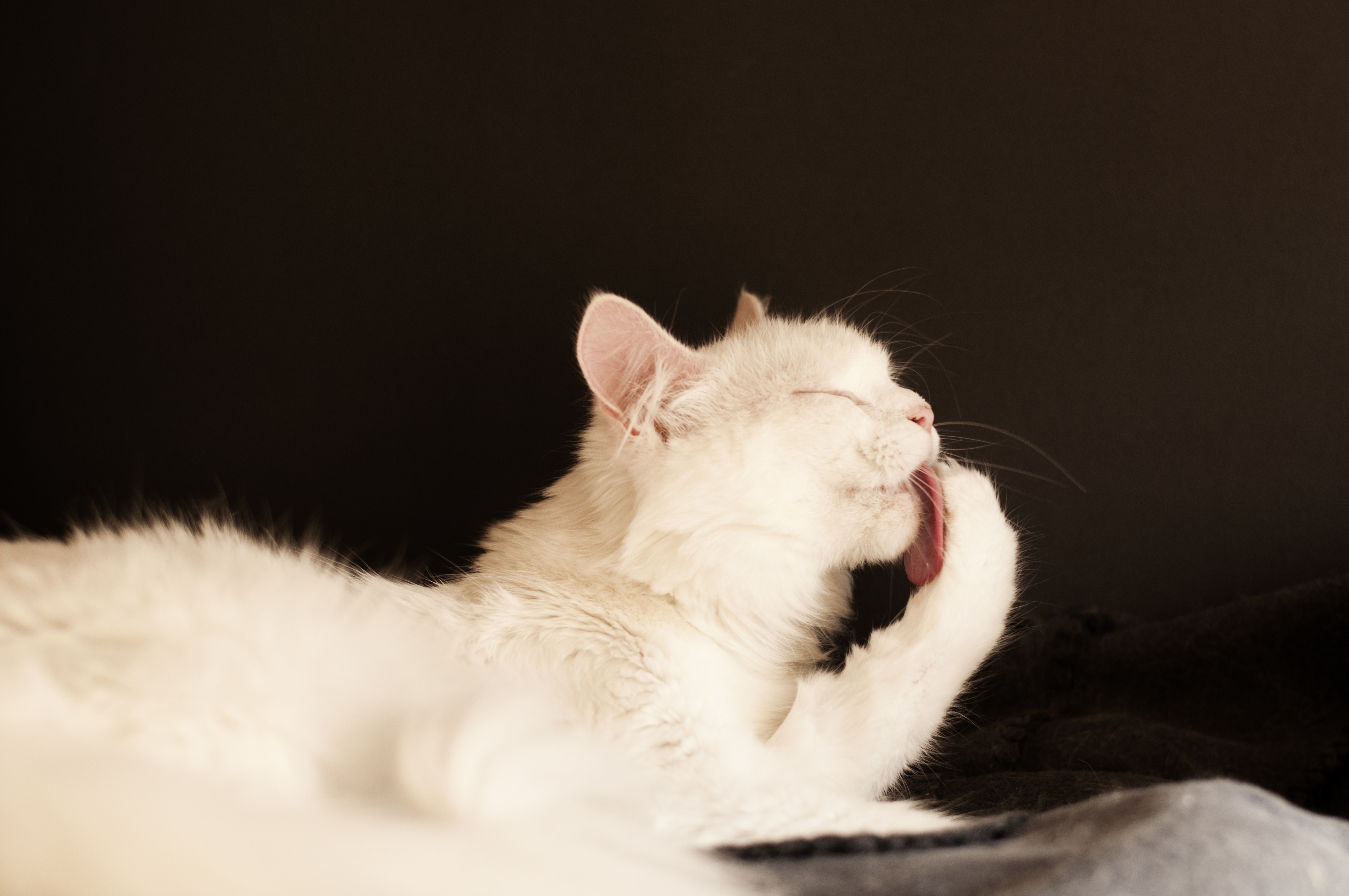
Opossums eat snails, slugs, and other insect pests. Since they are ground eaters for the majority of their lives, opossums pick up loads of ticks while foraging in the brush, a prime tick habitat. Thanks to their need to be clean, they groom ticks off and consume them – potentially lowering Lyme disease cases!
Opossums freeze up and “play dead” when frightened or threatened, and can stay in this catatonic state discouraging predators, from minutes to 6 hours!
Opossum are rarely found with rabies. They keep a lower body temperature (94-97°F) than mammals (97-103°F) so the rabies virus does not survive in their cooler body!
They eat pretty much anything live or dead, including venomous snakes because they are immune to most venom. On top of that, they are immune to honeybees and scorpions as well as to toxins such as botulism!
Opossums have opposable “thumbs” (halux) on their back feet, giving these critters agile climbing skills, and they have prehensile tails – meaning it acts as an extra hand –used for tasks like carrying nest-building material to helping them climb and/or hang from trees! Huge pupils for seeing at night, their most active period and teeth – 50 teeth in their mouth for eating everything and anything, including bones for calcium!
PB130405 (2).JPG
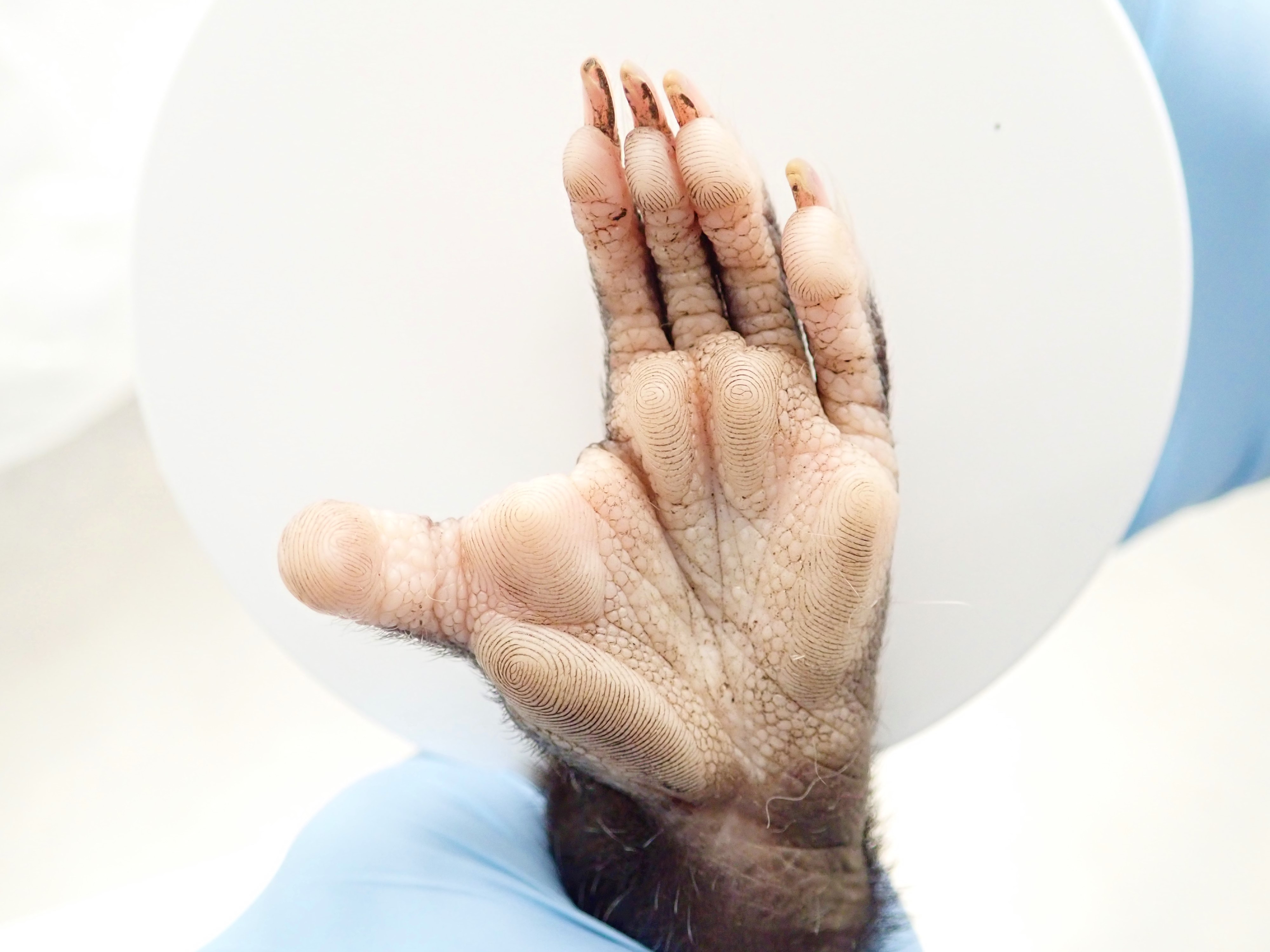
The North American opossum has an interesting adaptation not found in its Aussie cousins - both male and female reproductive parts are bifurcated - so the penis is like a pronged fork and female have two uteri and two vaginal canals! Even more interesting, male opossum sperm pairs up before insemination - why? Scientists aren't really sure - it improves swimming efficiency and opossum sperm count is much lower when compared to mammals, but the benefit is still perplexing.
Opossums, just like any other wildlife species, can carry disease. Most are transmitted through contact with their urine or feces and include leptospirosis, salmonella, toxoplasmosis, and coccidiosis which can affect people and domestic animals. Opossums are also carriers of equine protozoal myeloencephalitis (EPM), which affects horses when they ingest feces.
More serious diseases like tularemia and flea-borne typhus can occur when an opossum is infested with fleas, ticks, mites, and lice. Opossums are hosts for cat and dog fleas, especially in urban environments, so opossum proofing your home and yard protects your home, your pets, and the opossum.
Follow us on Twitter & Instagram
Krause, WJ, Krause WA (2006). THE OPOSSUM: ITS AMAZING STORY . Published by the Department of Pathology and Anatomical Sciences, School of Medicine, University of Missouri, Columbia, Missouri.



